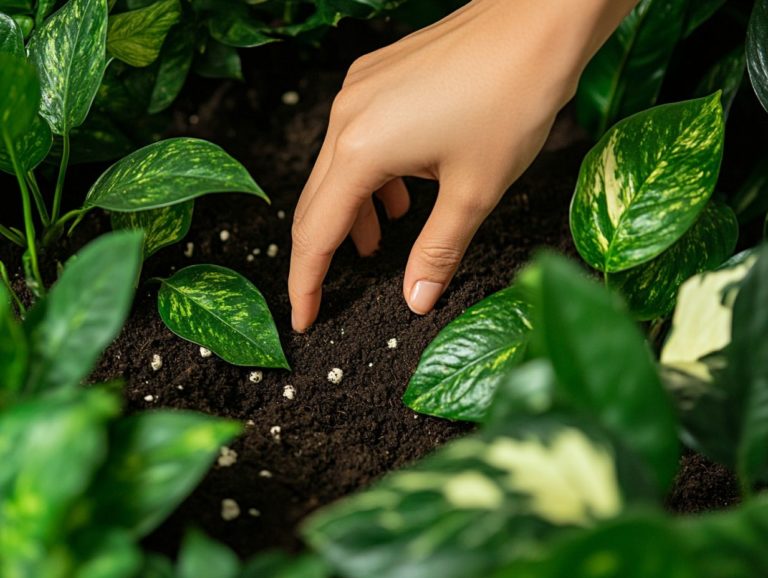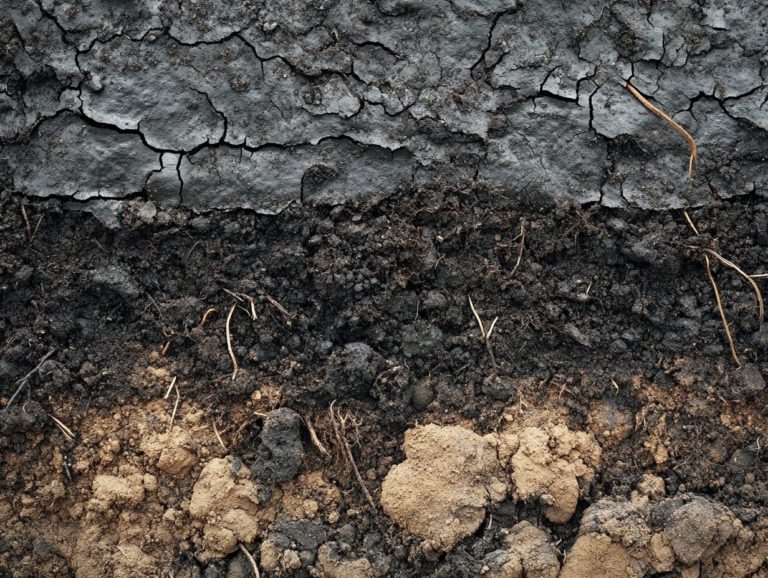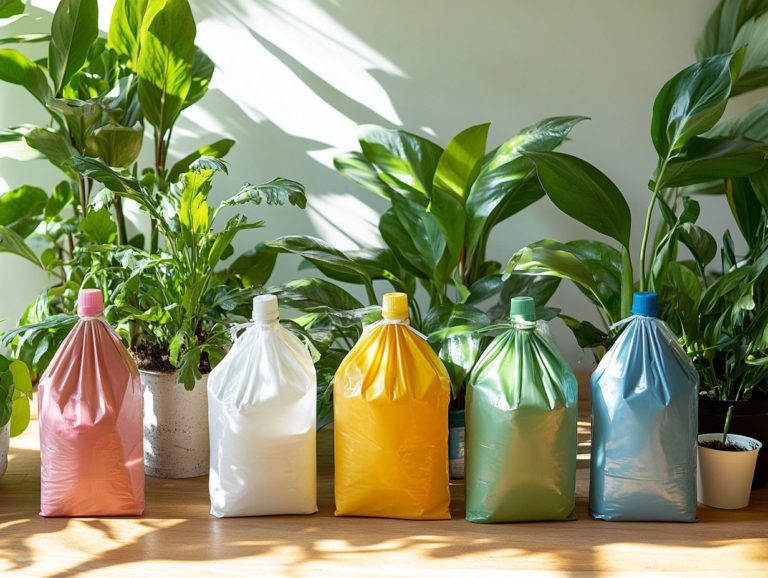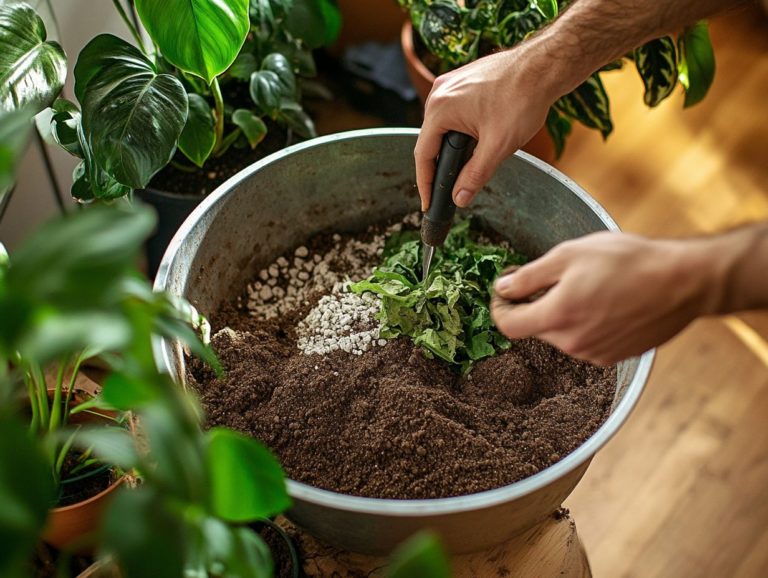The Impact of Soil Temperature on Growth
Soil temperature is fundamental to the health and growth of your plants. It influences everything from seed germination to nutrient absorption.
Several factors can impact soil temperature, such as climate and soil composition. Knowing the optimal temperature ranges for your plants is essential for gardeners and farmers alike.
This article explores how soil temperature affects plant growth and effective measurement techniques. We also discuss strategies for maintaining ideal conditions.
The implications of climate change on soil temperature are significant. This can have serious repercussions for agriculture.
Join us as we uncover the relationship between soil temperature and plant health.
Contents
- Key Takeaways:
- Understanding Soil Temperature
- Effects of Soil Temperature on Plant Growth
- Measuring and Monitoring Soil Temperature
- Ways to Control Soil Temperature
- Impact of Climate Change on Soil Temperature
- Frequently Asked Questions
- Understanding Soil Temperature
- What is the impact of soil temperature on plant growth?
- How does soil temperature affect plant root development?
- Can soil temperature affect the activity of microorganisms?
- What is the ideal soil temperature for plant growth?
- How does soil temperature affect seed germination?
- Can Extreme Soil Temperatures Affect Plant Growth for the Long Term?
Key Takeaways:
- Soil temperature is crucial for plant growth. It affects seed germination, root development, and nutrient absorption.
- Each plant requires specific temperatures for optimal health. Monitoring soil temperature ensures these conditions are met.
- Climate change could worsen the effects on soil temperature and plant growth. Regular monitoring and control are now more critical than ever!
Understanding Soil Temperature
Understanding soil temperature is essential for optimizing agricultural practices. Temperature directly influences crop development and nutrient uptake.
Seasonal changes add complexity to the challenges you face as a farmer. Grasping these dynamics helps you implement effective farming practices.
Factors Affecting Soil Temperature
Several factors influence soil temperature, impacting your crop yield. Solar radiation, soil composition, organic matter, and soil color are key players.
For example, solar radiation is the primary heat source for soils. Areas receiving more sunlight usually have higher soil temperatures, benefiting heat-loving crops like tomatoes.
Soil composition matters too. A balance of sand, silt, and clay determines how quickly your soil warms or cools down.
Organic matter enhances soil structure and moisture retention. This helps moderate temperature extremes, benefiting crops like lettuce and carrots.
Darker soils absorb more heat, boosting growth for some plants. However, this can stress heat-sensitive crops like leafy greens.
Effects of Soil Temperature on Plant Growth
Soil temperature plays a crucial role in plant growth. It directly affects vital processes such as nutrient uptake and root development.
Understanding the ideal temperature ranges for crops like lettuce and corn is essential. Deviations from these conditions can cause heat stress and hinder plant health.
Optimal Temperature Range for Different Plants
Different plants each have their own optimal temperature ranges that are crucial for their growth and development. For example, crops like lettuce flourish in cooler conditions, while corn and soybean prefer warmer temperatures.
Understanding these temperature preferences is key for you as a farmer aiming to maximize your yields. Keeping nighttime temperatures cooler can greatly benefit leafy greens that might struggle during prolonged heat spells. On the flip side, warm-season crops thrive when daytime temperatures rise, enabling them to photosynthesize effectively.
By monitoring local climate patterns and utilizing this temperature data, you can make informed decisions about planting schedules and crop rotation. This ensures your crops are grown in conditions that promote vigorous growth. This strategic approach not only enhances productivity but also minimizes losses and leads to successful harvests.
How Temperature Affects Plant Growth Processes
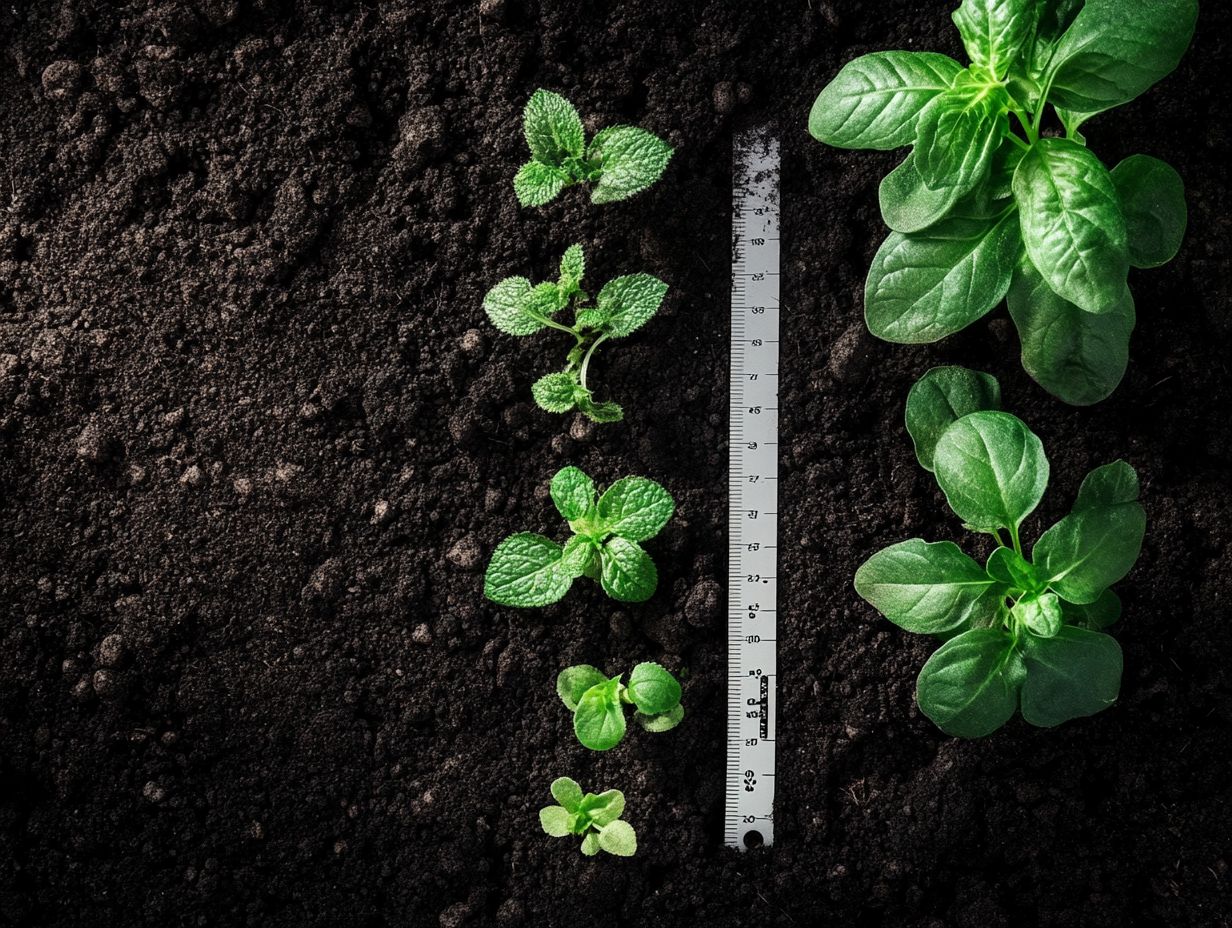
Temperature is a crucial factor in the growth processes of plants, directly influencing nutrient uptake, root development, and even the diversity of microorganisms within the soil ecosystem.
It plays a significant role in how plants make food and enzyme activity, both vital for the body processes and energy production in plants. When temperatures dip, plants often experience slower growth because enzyme efficiency decreases, limiting their capability to harness sunlight for energy. Excessively high temperatures can induce heat stress, wreaking havoc on cellular structures and functions.
Take crops like wheat and corn, for example; they thrive within specific temperature ranges, and any deviation can dramatically diminish yields. Understanding the intricate relationship between temperature and growth mechanisms is essential for optimizing agricultural practices and ensuring successful crop development.
Measuring and Monitoring Soil Temperature
Measuring and monitoring soil temperature is crucial for you as a farmer striving to optimize your agricultural practices and enhance crop yield. By utilizing modern soil monitors, you can access precise and timely data about your soil conditions, giving you the power to make informed decisions about your planting and irrigation strategies.
This proactive approach lets you shape the conditions for the best outcomes!
Methods for Measuring Soil Temperature
You have several effective methods for measuring soil temperature, including soil monitors and thermocouples, each bringing its own unique advantages for accurate data collection.
For instance, soil monitors are a popular choice for their ability to provide continuous readings, generating real-time information that’s crucial for managing crop health and optimizing irrigation practices. On the other hand, thermocouples a device that measures temperature using two different metals are often preferred for their precision and capability to measure temperature at various depths. This helps to understand how temperature variations in different soil layers influence root development and nutrient uptake.
Both techniques serve different needs in agricultural settings, so it s essential for you to choose the method that aligns best with your specific monitoring requirements.
Importance of Regular Monitoring
Keep your crops thriving by closely monitoring soil temperature! Regular monitoring is essential for maximizing plant growth and enhancing crop yield, allowing you to respond proactively to shifting thermal conditions.
By closely observing fluctuations in soil temperature, you can make informed decisions about irrigation, fertilization, and planting schedules. This approach not only fosters healthier crops but also promotes resource efficiency.
Grasping the optimal temperature range for specific crops aids in selecting the ideal planting time, effectively minimizing the risk of damage from unexpected frosts or heatwaves. Consistent temperature data is crucial for your pest management strategies, as certain pests thrive at specific temperatures, enabling you to protect your crops with precision and effectiveness.
Ways to Control Soil Temperature
Controlling soil temperature is critical for optimizing crop development. You can employ various methods, such as applying mulch or incorporating organic matter into the soil, to effectively achieve this goal.
These strategies enhance soil thermal properties and contribute to a more robust growing environment for your plants.
Using Mulch and Other Techniques
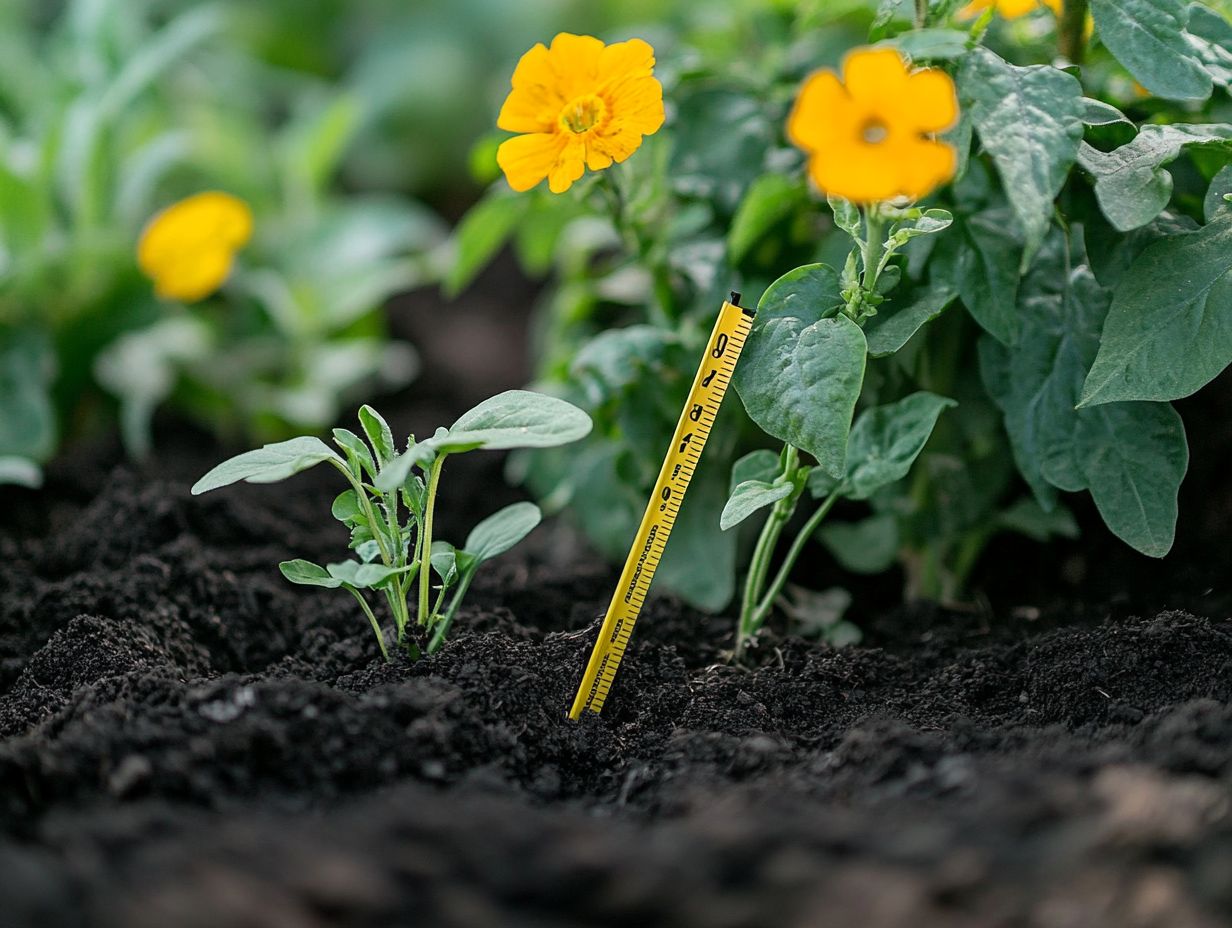
Using mulch is an excellent strategy for managing soil temperature. It helps retain moisture while providing insulation against extreme temperature swings.
You can choose from various types, such as straw, wood chips, or grass clippings. All of these options effectively regulate heat levels. For example, organic mulches break down over time, enriching the soil and enhancing its structure. In contrast, inorganic options, like landscape fabric, offer a more durable protective solution.
Consider incorporating cover crops and adjusting your planting schedules to further improve temperature regulation and soil vitality. Together, these strategies enhance soil health, promote better nutrient availability, and encourage robust crop growth, ultimately leading to more fruitful yields.
Impact of Climate Change on Soil Temperature
Are you aware of how climate change is altering the soil your crops depend on? Climate change presents serious risks to soil temperature, resulting in changes that can greatly impact plant growth, agricultural practices, and crop yield.
The seasonal temperature fluctuations caused by climate change compel you to adapt your agricultural practices, striving for sustainable agriculture while safeguarding food security.
Predicted Effects on Plant Growth and Agriculture
The predicted effects of climate change on plant growth and crop development suggest you ll face altered growing seasons, increased heat stress, and decreased crop yields, especially for temperature-sensitive crops.
As these changes unfold, you may find yourself reassessing your planting schedules and opting for more resilient varieties that can withstand fluctuating temperatures and extended droughts. This adaptation process could initiate a significant transformation in your traditional farming practices, steering agricultural communities toward innovative solutions such as precision farming and diversified cropping systems.
The long-term effects might extend beyond your immediate crop choices, influencing soil health, pest management strategies, and regional economic stability. These changes will also impact soil properties and ecosystems, ultimately reshaping the landscape of modern agriculture.
Frequently Asked Questions
Understanding Soil Temperature
What is the impact of soil temperature on plant growth?
Soil temperature is critical for your plants success! It directly affects the activity of microorganisms, root growth, and nutrient availability, particularly regarding nitrogen and phosphorus levels.
How does soil temperature affect plant root development?
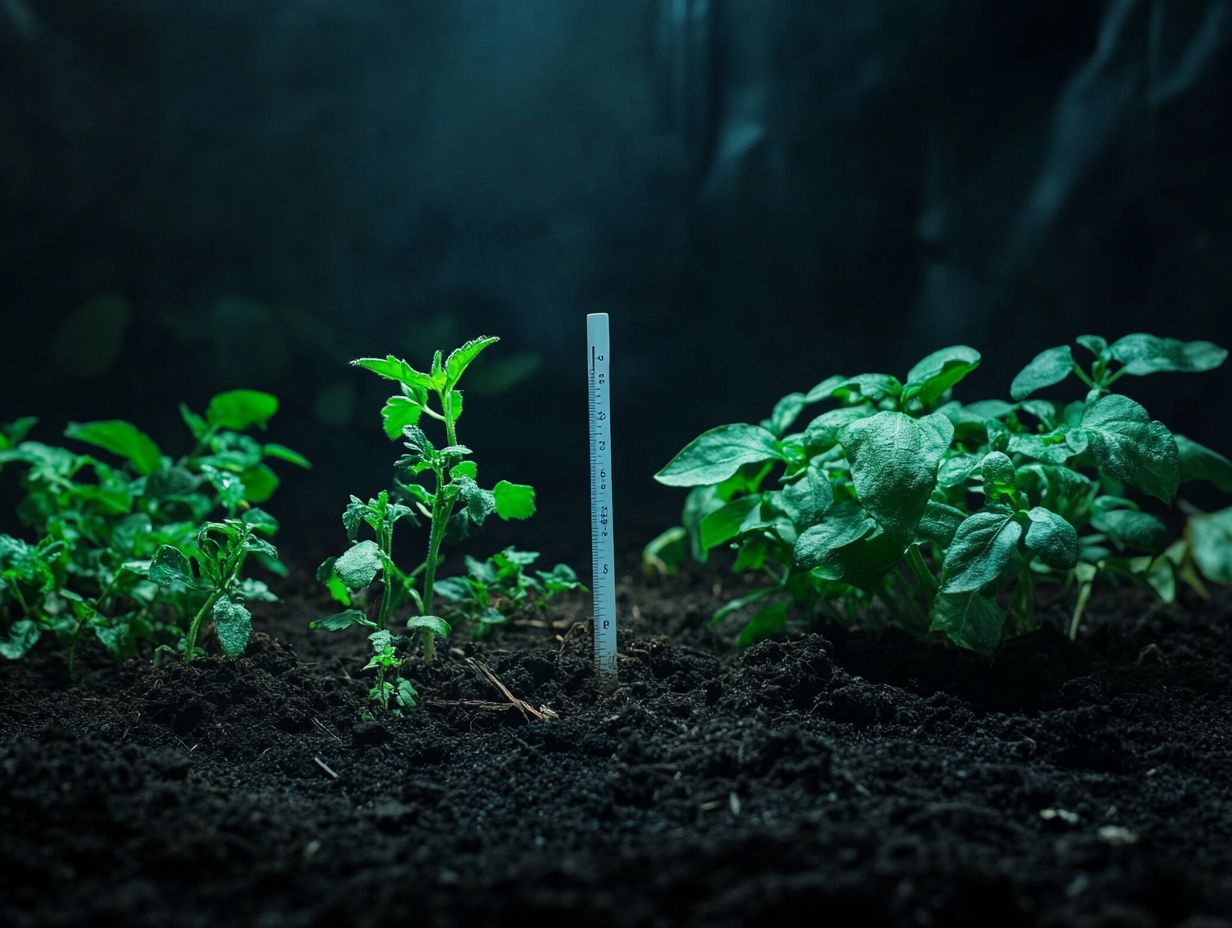
When soil temperature is too cold, it slows down root growth and limits the absorption of water and nutrients, stunting plant growth. Conversely, high soil temperatures can lead to root damage and hinder growth.
Can soil temperature affect the activity of microorganisms?
Yes! Soil temperature significantly impacts the activity of microorganisms. Cold temperatures can slow them down, affecting nutrient recycling and availability for plants. High temperatures can also be detrimental, potentially killing essential microorganisms in the soil.
What is the ideal soil temperature for plant growth?
The ideal soil temperature for most plants ranges between 65 and 75 degrees Fahrenheit. This temperature allows for optimal root development, nutrient absorption, and microbial activity.
How does soil temperature affect seed germination?
Soil temperature is critical for seed germination as it helps activate enzymes that break down stored food in the seed. If the soil temperature is too low, germination may be delayed or inhibited altogether.
Can Extreme Soil Temperatures Affect Plant Growth for the Long Term?
Yes, extreme soil temperatures can harm plant growth over time.
High temperatures can damage roots permanently.
Cold temperatures can stunt growth and weaken plants, making them more vulnerable to diseases and pests.

